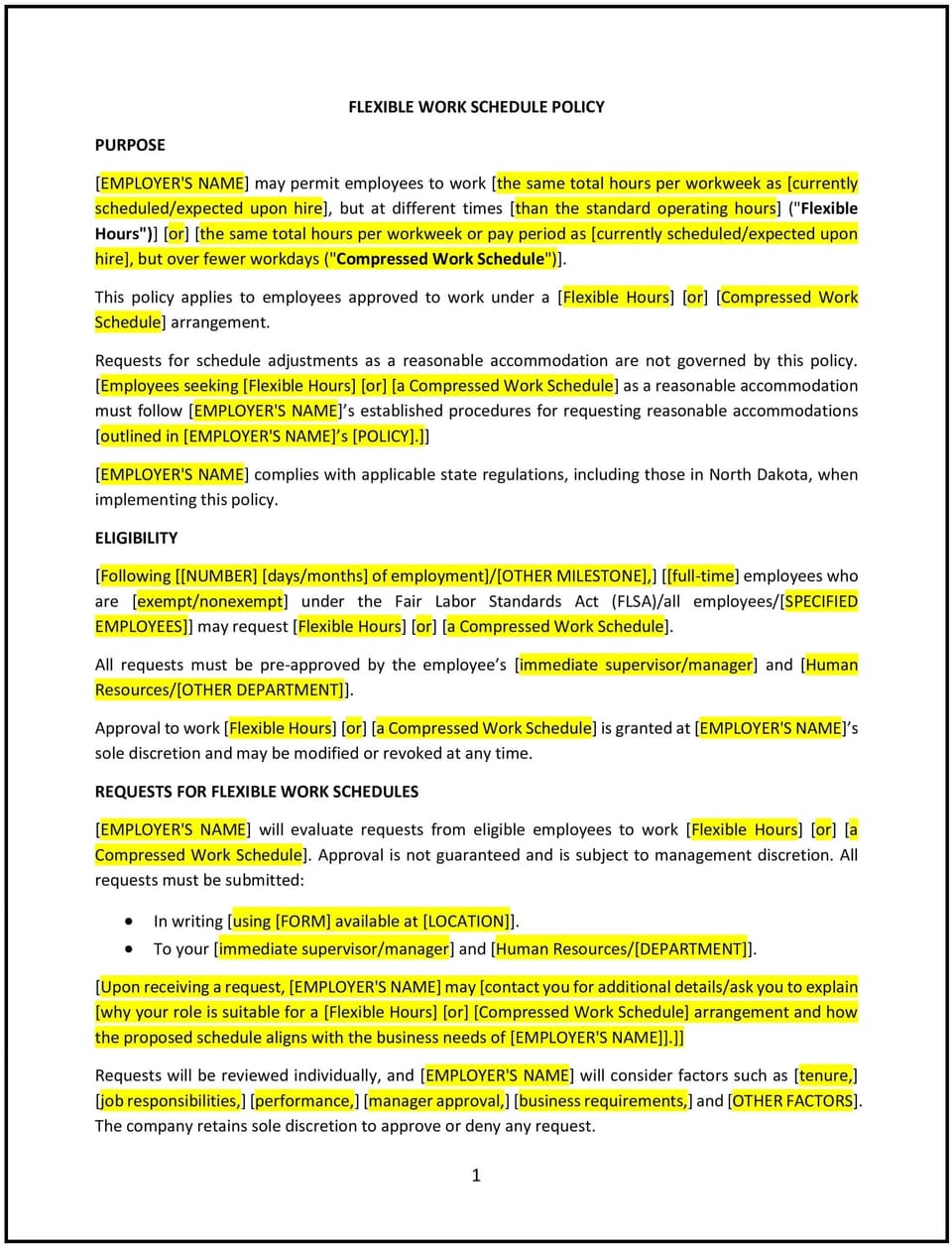Flexible work schedule policy (North Dakota): Free template

Flexible work schedule policy (North Dakota)
This flexible work schedule policy is designed to help North Dakota businesses establish guidelines for offering alternative work arrangements, such as remote work, flex hours, or compressed workweeks. The policy outlines eligibility, approval processes, and expectations for employees utilizing flexible schedules.
By implementing this policy, businesses can enhance work-life balance, improve productivity, and attract top talent.
How to use this flexible work schedule policy (North Dakota)
- Define eligibility criteria: Establish which roles or employees qualify for flexible scheduling.
- Outline work arrangement options: Include flex hours, remote work, or alternative schedules.
- Set approval procedures: Require employees to request flexible arrangements in advance.
- Address communication expectations: Ensure employees remain accessible and responsive.
- Monitor performance: Set measurable goals to track productivity under flexible arrangements.
- Clarify in-office requirements: Specify days employees must be physically present.
- Review regularly: Adjust the policy based on operational needs and employee feedback.
Benefits of using this flexible work schedule policy (North Dakota)
Implementing this policy provides several advantages for North Dakota businesses:
- Enhances employee satisfaction: Supports work-life balance and job flexibility.
- Improves retention: Encourages employees to stay by offering scheduling options.
- Increases productivity: Allows employees to work during peak performance hours.
- Supports remote work: Provides clear guidelines for off-site work arrangements.
- Reflects North Dakota-specific considerations: Addresses workforce trends and regional industry needs.
Tips for using this flexible work schedule policy (North Dakota)
- Set clear availability expectations: Ensure employees remain reachable during business hours.
- Require written agreements: Formalize flexible work arrangements for consistency.
- Monitor schedule effectiveness: Evaluate productivity and make adjustments as needed.
- Train managers on flexibility policies: Ensure fair and consistent implementation.
- Adjust as needed: Modify policies based on operational demands and employee performance.
Q: What types of flexible work arrangements can businesses offer?
A: Businesses should define options such as remote work, flex hours, or compressed workweeks.
Q: How should businesses track employee performance under flexible schedules?
A: Businesses should set measurable goals and require regular progress updates.
Q: Can businesses require employees to work on-site part-time?
A: Yes, businesses should specify any in-office requirements for hybrid work arrangements.
Q: How should businesses handle requests for flexible schedules?
A: Businesses should establish an approval process based on job role and performance.
Q: How often should this policy be reviewed?
A: The policy should be reviewed annually or as business needs evolve.
This article contains general legal information and does not contain legal advice. Cobrief is not a law firm or a substitute for an attorney or law firm. The law is complex and changes often. For legal advice, please ask a lawyer.


